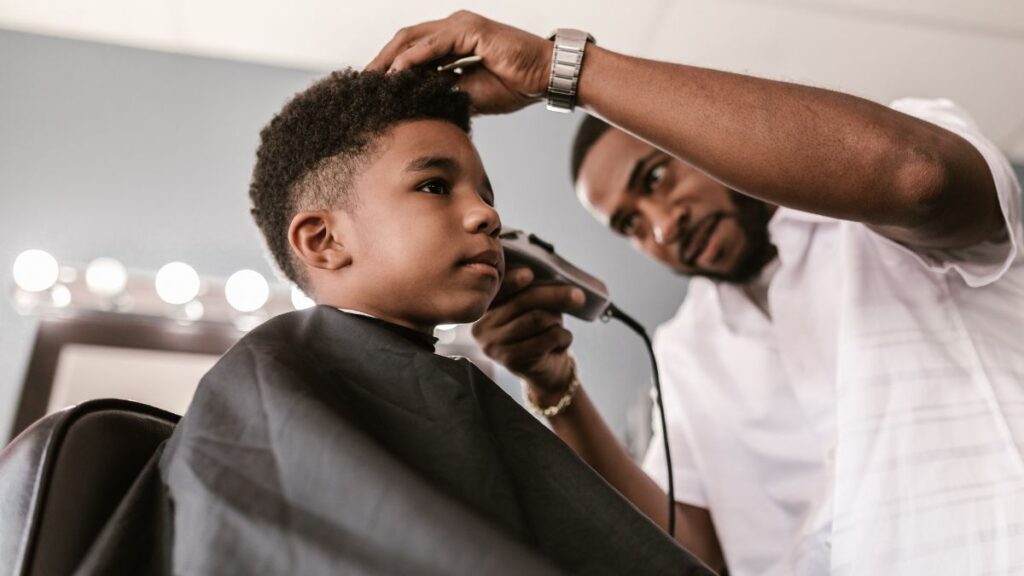So, you want to be your own boss, huh? Sick of the 9-to-5 grind and ready to build an empire one fade at a time? Smart move. The barbershop business in Kenya is booming.
But before you start picturing yourself leaning back in a barber chair, raking in the cash, let’s talk about the cost of a barbershop business in Kenya. Because, let’s be real, you need capital to create a killer kinyozi.
This ain’t some fluffy overview. We’re going deep on the numbers, giving you the real deal on what it takes to launch your barbershop. Plus, I’ll throw in some Hormozi-style tips to help you maximize profits and dominate the Kenyan barber scene.
Want to Open a Barbershop in Kenya? Here’s the Cost Breakdown (And How to Make it Rain)
1. Location, Location, Location (and the Price Tag)
First things first: where are you setting up shop? This is make-or-break for your barbershop. A high-traffic area with good visibility? Cha-ching! A hidden alleyway nobody knows about? Not so much.
Here’s the breakdown:
- Renting a space: Expect to pay anywhere from Ksh 10,000 to Ksh 50,000 per month, depending on the location and size. Prime spots in Nairobi or Mombasa will obviously cost more.
- Pro Tip: Negotiate the lease! Don’t just accept the first offer. See if you can get a better deal, especially if you’re signing a long-term lease.
- Goodwill: This is a hidden cost that can bite you in the ass. In some areas, you might have to pay “goodwill” to the previous tenant or landlord. This can be a hefty sum, so factor it into your budget.
- Pro Tip: Do your research! Ask around and find out the typical goodwill fees in your area. Be prepared to walk away if the price is too high.
Don’t forget:
- Utilities: Electricity, water, and garbage collection will add to your monthly expenses.
- Security: Consider investing in a security system or hiring a guard, especially if you’re in a high-crime area.
2. Equipping Your Barbershop: The Tools of the Trade
You can’t cut hair with your bare hands, can you? (Unless you’re some kind of wizard barber, which would be pretty cool.) You need the right equipment to deliver a top-notch experience.
Here’s what you’ll need:
- Barber chairs: These are your throne. Comfortable, adjustable, and durable. Expect to pay Ksh 15,000 to Ksh 50,000 per chair.
- Pro Tip: Buy quality chairs! They’ll last longer and provide a better experience for your clients.
- Mirrors: Essential for checking those fades and lineups. Large, well-lit mirrors are a must.
- Clippers and trimmers: Invest in professional-grade clippers and trimmers. Don’t skimp on these! Your clients will notice the difference.
- Top Tool Recommendation: Wahl Senior Cordless Clipper. Powerful, reliable, and perfect for fades.
- Scissors and combs: A variety of scissors and combs for different hair types and styles.
- Sterilization equipment: Hygiene is crucial! Invest in a good autoclave or UV sterilizer to keep your tools clean.
- Other essentials: Hairdryers, capes, towels, shaving cream, aftershave, etc.
Pro Tip: Shop around for the best deals! Compare prices from different suppliers before making a purchase.
3. Staffing
Unless you plan on being a one-man show (which is tough!), you’ll need to hire barbers. Finding talented and reliable barbers is key to your success.
Here’s what to consider:
- Salaries and commissions: How will you pay your barbers? A fixed salary, commission, or a combination of both?
- Pro Tip: Offer a competitive compensation package to attract and retain top talent.
- Training and development: Invest in your barbers’ skills. Send them to workshops or provide on-the-job training to keep them sharp.
- Employee benefits: Consider offering benefits like health insurance or paid time off to keep your employees happy and motivated.
Don’t forget:
- Recruitment costs: Advertising for open positions and conducting interviews will cost you time and money.
- Legal requirements: Make sure you comply with all labor laws and regulations.
4. Marketing and Branding: Getting the Word Out
You’ve got the location, the equipment, and the staff.
Now, you need to get clients in the door. Marketing is essential for any barbershop.
Here’s how to do it:
- Social media: Create a strong presence on social media platforms like Instagram and Facebook. Showcase your work, run promotions, and engage with potential clients.
- Pro Tip: Use high-quality photos and videos to attract attention.
- Local advertising: Flyers, posters, and local newspaper ads can be effective in reaching your target audience.
- Word-of-mouth: Encourage your clients to spread the word by offering referral bonuses or loyalty programs.
- Pro Tip: Provide exceptional service and build relationships with your clients. They’ll be your best marketers.
- Branding: Create a unique brand identity for your barbershop. This includes your logo, color scheme, and overall vibe.
- Pro Tip: Think about your target audience and what kind of image you want to project.
Don’t forget:
- Website: A professional website can help you attract new clients and showcase your services.
- Online booking: Make it easy for clients to book appointments online.
5. Licenses and Permits
Don’t let bureaucracy kill your dream. Make sure you have all the necessary licenses and permits to operate your barbershop legally.
Here’s what you’ll need:
- Single business permit: This is a must-have for any business in Kenya. The cost varies depending on your county.
- Fire safety certificate: Ensure your premises comply with fire safety regulations.
- Health certificate: This shows that your barbershop meets health and hygiene standards.
Pro Tip: Contact your local county government for information on specific requirements and fees.
6. Ongoing Costs
Running a barbershop isn’t a one-time expense. You’ll have ongoing costs to keep things running smoothly.
Here are some examples:
- Rent and utilities: These are recurring monthly expenses.
- Supplies: You’ll need to restock on products like shaving cream, aftershave, and cleaning supplies.
- Maintenance: Keep your equipment in good condition with regular maintenance.
- Marketing and advertising: Continue to invest in marketing to attract new clients and retain existing ones.
Pro Tip: Track your expenses carefully to identify areas where you can save money.
7. Turning a Profit: The Hormozi Way
Now, let’s talk about the fun stuff: making money. You didn’t open a barbershop to break even, did you? You want to generate wealth and build a thriving business.
Here are some Hormozi-inspired strategies:
- Value-driven pricing: Don’t just compete on price. Focus on providing exceptional value and charge accordingly.
- Example: Offer a premium shaving experience with hot towels, a facial massage, and high-end products.
- Upselling and cross-selling: Offer additional services or products to increase your average transaction value.
- Example: Offer a hair wash and conditioning treatment with every haircut.
- Build a loyal customer base: Focus on building relationships with your clients. Happy clients will come back again and again.
- Example: Implement a loyalty program with rewards for repeat customers.
- Optimize your operations: Streamline your processes to improve efficiency and reduce costs.
- Example: Implement an online booking system to reduce no-shows and save time.
Remember: Your barbershop is a business. Treat it like one. Track your numbers, analyze your results, and make adjustments to maximize your profits.
Final Thoughts: Ready to Take the Plunge?
Opening a barbershop in Kenya is a smart move. It’s a growing industry with huge potential. But it takes more than just a passion for fades and a sharp pair of clippers.
You need a solid business plan, a keen understanding of the costs involved, and a relentless drive to succeed.
So, what are you waiting for?
Take action, build your empire, and become the next barbershop king of Kenya. Just remember to keep those clippers sharp and the profits rolling in.
Read also:


